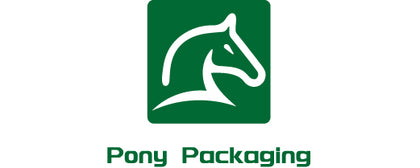BPA-Free Thermal Paper: Exploring the Pros and Cons of 3 1 8 x 230 Thermal Paper
Introduction:
In recent years, concerns about the potential health risks associated with Bisphenol A (BPA), a chemical commonly used in the production of thermal paper, have led to the development and adoption of BPA-free alternatives. One such alternative gaining popularity is 3 1 8 x 230 thermal paper. In this article, we will delve into the pros and cons of using BPA-free thermal paper, specifically focusing on 3 1 8 x 230 thermal paper receipt rolls, thermal register paper 3 1 8, and thermal cash register paper 3 1 8.
Understanding BPA and Its Risks:
BPA is a synthetic compound often found in plastic products, including thermal paper. Research has suggested that exposure to BPA may pose potential health risks, leading to a growing demand for BPA-free alternatives. This has prompted the development of thermal paper that eliminates or reduces the use of BPA in its production.
Pros of 3 1 8 x 230 Thermal Paper:
Health and Environmental Benefits:
The primary advantage of 3 1 8 x 230 thermal paper lies in its BPA-free composition. Businesses and consumers alike are increasingly conscious of the potential health risks associated with BPA exposure. Choosing BPA-free thermal paper helps mitigate these concerns and contributes to a healthier and more sustainable environment.
Regulatory Compliance:
With increasing awareness of environmental and health-related issues, regulatory bodies are tightening restrictions on the use of certain chemicals, including BPA. Opting for 3 1 8 x 230 thermal paper receipt rolls ensures compliance with evolving regulations, safeguarding businesses from potential legal implications.
Enhanced Print Quality:
BPA-free thermal paper, such as the 3 1 8 x 230 variant, often boasts enhanced print quality. This is crucial for businesses that rely on thermal printing technology for receipts, labels, and other documentation. The improved print quality ensures clear and durable prints, contributing to a professional image.
Wide Application Range:
3 1 8 x 230 thermal paper is compatible with various thermal printing devices, making it a versatile choice for businesses across different industries. Whether used in point-of-sale systems, cash registers, or other thermal printing applications, this paper size offers flexibility and convenience.
Cons of 3 1 8 x 230 Thermal Paper:
Cost Considerations:
One of the potential drawbacks of BPA-free thermal paper is its cost. As the demand for eco-friendly alternatives rises, the initial cost of 3 1 8 x 230 thermal paper receipt rolls may be higher than traditional thermal paper. However, it's essential to weigh this against the long-term benefits and potential savings in health-related expenses.
Limited Availability:
While the popularity of BPA-free thermal paper is growing, it may not be as readily available as traditional thermal paper options. Businesses may need to invest time in sourcing reliable suppliers to ensure a consistent and sufficient supply of 3 1 8 x 230 thermal paper.
Transition Challenges:
Transitioning from traditional thermal paper to BPA-free alternatives like 3 1 8 x 230 thermal paper may pose challenges for businesses. Compatibility issues, equipment adjustments, and staff training may be necessary, potentially causing disruptions in daily operations.
Conclusion:
In conclusion, the shift towards BPA-free thermal paper, particularly 3 1 8 x 230 thermal paper, represents a positive step towards addressing health and environmental concerns associated with traditional thermal paper. While there are challenges, the long-term benefits, including regulatory compliance, enhanced print quality, and versatility, make it a compelling choice for businesses aiming to prioritize sustainability and the well-being of their customers and employees. As technology and manufacturing processes continue to evolve, it is likely that BPA-free alternatives will become more accessible and integral to various industries.


